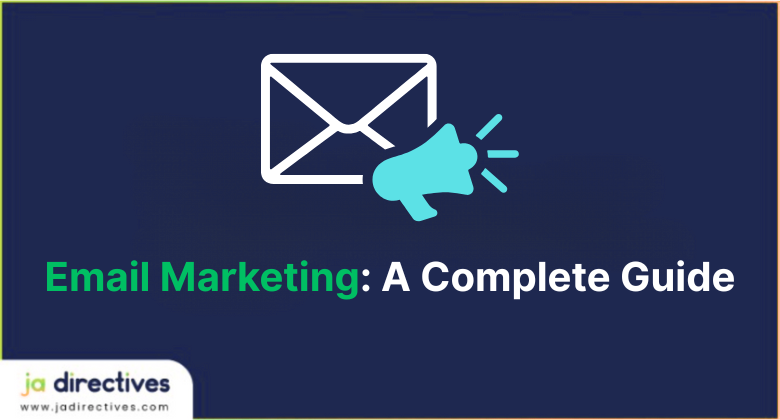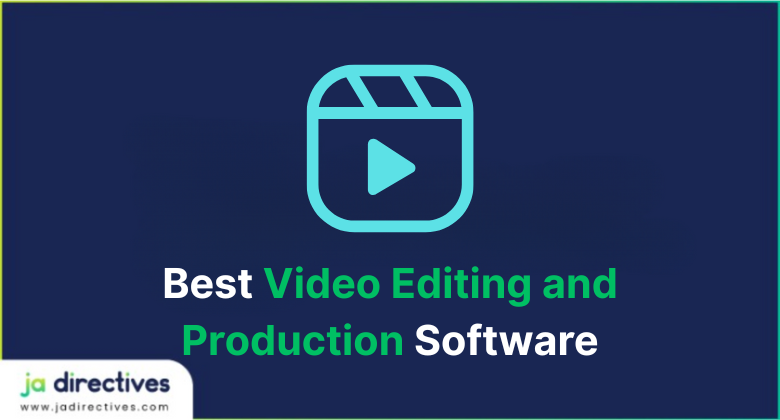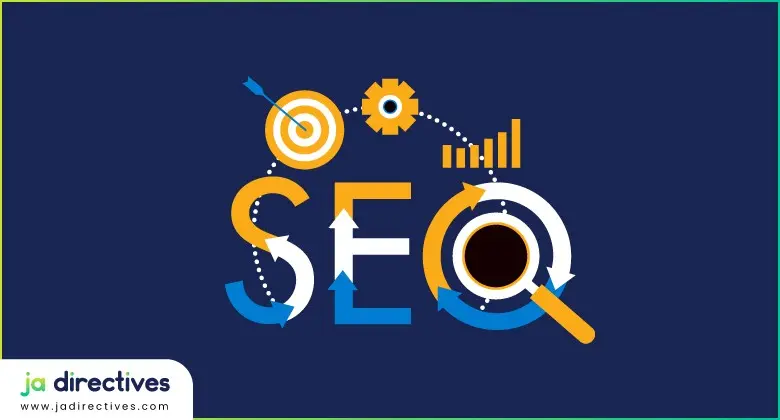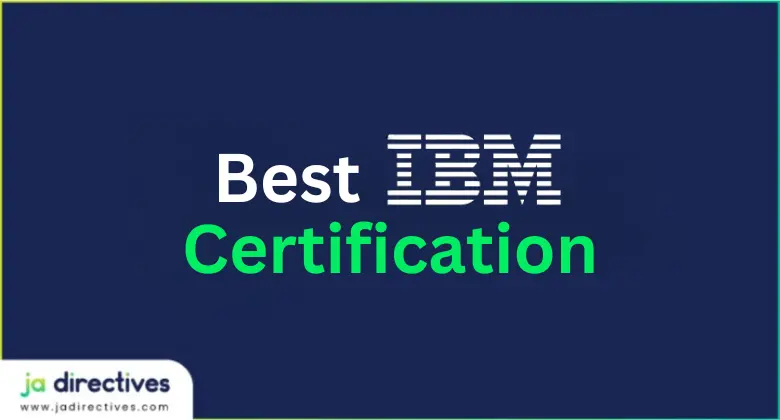
What is Email Marketing: A Complete Guide For Beginners
Did you know that on average for every $1 you spend on email marketing, you can expect a return of $36? That’s 3600% return on investment!
With such potential, it’s no surprise that email marketing is one of the most powerful tools for businesses to connect with people.
Whether you’re running a small online shop or managing a big brand, email marketing gives you a direct line to your customers.
So, what is email marketing really about?
Let’s discuss it in a way that’s clear, simple, and easy to put into action.
What is Email Marketing?
Email marketing is a way for businesses to send messages to people through email. These messages can be promotional emails, newsletters, updates, or even personal greetings.
The goal is to keep your customers engaged, grow your brand awareness, and encourage people to buy your products or services.
In other words, email marketing is like having a friendly chat with your audience—right in their inbox.
So, what is a marketing email and how does it work?
A marketing email is any email that a business sends to promote something. It could be a new product launch, a seasonal sale, or a useful blog post.
These emails often include a call to action—like “Shop Now,” “Sign Up Today,” or “Get 20% Off.”
Email marketing works by building a list of people who are interested in what you offer and then sending them helpful, timely, and interesting content.
Why is email marketing important?
Email marketing is important because it is personal, direct, and measurable, making it one of the most effective kind of marketing communications.
You get to track how many people opened your email, how many clicked on your links, and what they did next.
This is the type of data which helps you improve your future marketing campaigns and increase revenue.
Plus, with email, you do not have to rely on social media algorithms. If you’ve got someone’s email address, you have a clear, reliable way to reach them.
How Does Email Marketing Work?
Email marketing may seem simple at first—write an email, hit send, and wait for results. But to do it effectively, there’s a lot more going on behind the scenes.
Let’s walk you through the step-by-step process of how email marketing really works.
1. Build Your Email List
Everything starts with your email list. This is a group of people who’ve agreed to hear from you. You can grow this list through:
- Sign-up forms on your website
- Free downloads or lead magnets
- Contests or giveaways
- In-store promotions
Pro tip: Never buy an email list. It may sound convenient but it hurts your sender reputation and gets you email in spam folders.
2. Pick an ESP (Email Service Provider)
Now that you’ve got a list, you need a tool to send your emails. That’s where an ESP (Email Service Provider) comes in.
So, what is ESP in email marketing?
It’s a platform that helps you design, send, and track your emails. Some of the most popular email marketing platforms include:
- Moosend
- Campaigner
- Klaviyo
A good ESP lets you send automated emails, tracks opens and clicks, and even segments your audience.
3. Create Great Email Content
Next, it’s time to write your email. This is where you share updates, offer deals, or teach something useful. Your content should be:
- Clear and helpful
- Personal (use the subscriber’s name if possible)
- Focused on products or services your audience cares about
- Packed with value with a strong call to action
Make your email subject lines attention grabbing—they’re the first thing people see.
4. Use Email Marketing Automation
If you want to save time and boost results, use email marketing automation. This means your emails are sent automatically, based on triggers like sign-ups or purchases.
What is email marketing automation?
It’s when emails go out without you having to press send every time. For example:
- You can send a welcome email when someone signs up.
- Send a reminder email when someone adds to their cart but doesn’t buy.
- Has it been months since they ordered? → Send a re-engagement email.
This is also called a drip email marketing campaign—where a series of automated emails is sent over time to guide a potential customer toward a sale.
5. Track the Results
Once your emails are out there, you’ll want to see how they performed. Some key metrics include:
- Open Rate – How many people opened your email
- Click Rate – How many clicked on your links
- Conversion Rate – How many took the action you wanted
- Unsubscribe Rate – How many opted out
This tells you what’s working, what’s not, and how to improve your next marketing email
Types of Email Marketing Campaigns
Email marketing isn’t just about sending the same message to everyone. There are different types of email campaigns, each with a specific purpose. Understanding different types of email campaigns helps you send the right content to the right people at the right time.
Let’s look at the most common types.
1. Welcome Emails
When someone joins your list, this is the first email they receive. It’s your chance to say hello, introduce your brand, and set expectations. Welcome emails often have higher open rates than other types because people are curious about what they just signed up for.
2. Promotional Emails
These are the most familiar type. A promotional email announces a sale, product launch, or limited-time offer. These emails are great for driving traffic and boosting sales.
3. Newsletters
Newsletters are usually sent on a regular schedule—weekly, biweekly, or monthly—and include updates, tips, blog content, or curated links. They keep your audience engaged and help build long-term relationships.
4. Drip Campaigns
So, what is drip email marketing exactly?
A drip campaign is a series of automated emails sent based on time or user behavior. For example, someone downloads your free guide, and over the next few days, they get 3–5 emails that introduce your services.
This type of email marketing automation is incredibly effective because it nurtures leads without you doing the work manually.
5. Transactional Emails
These are triggered by specific actions, like order confirmations, shipping updates, or password resets. While they’re functional, you can also use them to upsell or invite further engagement.
6. Re-engagement Emails
If someone hasn’t opened your emails in a while, a re-engagement email asks, “Still interested?” This helps clean your list and improve your open rate for email marketing overall.
What Makes an Email Campaign Effective?
You don’t want your emails sitting unopened in inboxes—or worse, ending up in spam folders. So how do you create a campaign that actually works?
Let’s break down what is the most effective email marketing campaign strategy and how you can use it.
1. Know Your Goal
What do you want the reader to do? Sign up? Buy something? Share your content? Every email needs a clear purpose and a single call to action (CTA).
2. Personalize Your Emails
Emails that feel personal get higher open rates. Use the subscriber’s name, reference past behavior, and offer content they care about. It helps your potential customers feel seen.
3. Segment Your Audience
Not every email is right for every subscriber. Divide your list by age, location, purchase history, or interests. This lets you tailor your content—and boost your click-through rates.
4. Keep the Design Clean and Mobile-Friendly
More than half of people check email on their phones. Use large buttons, short paragraphs, and clean layouts that look good on any device.
5. Avoid the Spam Folder
Always get permission before emailing, avoid all caps and too many links, and include an easy unsubscribe button. Also, avoid “spammy” trigger words that can hurt your deliverability.
Avoid spammy words like “FREE!!!” and aim for curiosity, urgency, or a friendly tone. For example:
- Bad: “Buy Now!”
- Better: “Your 25% Discount Expires at Midnight ”
Best Times to Send Marketing Emails
When it comes to email marketing, timing is the key.
One of the most common questions businesses ask is: “What is the best time to send a marketing email?”
It’s a great question—even the best email content won’t perform well if it lands in an inbox at the wrong moment.
You might also be wondering more generally, “What is the best time to send email marketing content?”
Or even more specifically, “What time is best to send email marketing to my audience?”
The reality is, while there’s no single answer that works for everyone, there are data-backed trends that can guide you in the right direction.
1. What the Data Says (Industry Averages)
While there’s no one-size-fits-all rule, studies suggest the best times are:
- Midweek (Tuesday–Thursday)
- Morning hours (8–10 a.m.)
These times tend to show higher open rates because people are checking emails after settling into their day.
2. Test to Find Your Best Time
Your audience might not follow the average pattern. That’s why it’s smart to experiment. Try sending emails at different times, track your open rate for email, and see what works best.
Many email marketing platforms let you automatically send at optimized times for each subscriber—based on their past behavior.
Email Marketing Metrics You Should Track
If you’re sending emails but not tracking your results, you’re missing out on crucial insights. Email marketing gives you real-time data to improve your campaigns—but only if you know which metrics to watch.
Let’s answer some key questions like:
1. Open Rate
This shows the percentage of subscribers who opened your email. It’s a great way to measure how effective your email subject lines are.
So, it raises the question: what is a good open rate for marketing emails?
The answer: the average email open rate across industries typically falls between 17% and 25%, but this can vary based on your audience.
2. Click-Through Rate (CTR)
This tells you how many people clicked on links in your email. If your CTR is low, maybe your call to action needs to be stronger or your content isn’t compelling enough.
3. Conversion Rate
This is the percentage of users who completed the action you intended—like making a purchase or signing up. It’s one of the most important metrics in determining ROI from your email marketing campaign.
4. Bounce Rate
A high bounce rate means your emails aren’t getting delivered. This often happens when emails are invalid or mistyped. Clean your list often to keep this number low.
5. Unsubscribe Rate
You’ll always have a few unsubscribes. But if you see a spike, check your email frequency, tone, or whether your content aligns with subscriber expectations.
The Best Email Marketing Platforms
Choosing the right email marketing platform (ESP) is the key to success. A good ESP helps you send automated emails, track performance, personalize your content, and maintain a clean list.
Let’s take a look at some of the best email marketing platforms available right now.
1. Moosend
Moosend is a good tool for small businesses. It’s easy to use with a drag-and-drop email builder, so you can make emails quickly. It also has helpful features to send emails automatically and save time.
2. Campaigner
Campaigner lets you send the right emails to the right people. You can easily see how your emails are doing with real-time reports. It’s great for businesses that want to personalize their messages.
3. Warmy.io
Warmy.io helps make sure your emails don’t go to the spam folder. It’s perfect if you’re using a new email account or domain. It improves your email reputation before you send out your real campaigns.
4. Warmup Inbox
Warmup Inbox also helps your emails land in the inbox. It interacts with your emails in the background to make your email account look more trusted. This makes it easier to reach your audience.
5. Direct IQ
Direct IQ is simple and fast. It’s great if you’re just starting out and want to send basic emails. It comes with ready-made templates so you don’t have to design from scratch.
6. Mail Blaze
Mail Blaze is good if you want to send both emails and text messages. It has tools to help you send messages automatically and track who opened or clicked your emails. It works well for online stores.
7. mailfloss
Email Floss cleans your email list by removing bad or fake addresses. This helps your emails reach real people and keeps your sender score high. It’s best to use before sending big campaigns.
8. Klaviyo
Klaviyo is made for online shops, especially if you use Shopify. It helps you send smart, targeted emails based on customer data. It’s great for building your brand and getting repeat sales
Whether you’re just starting or scaling up, pick the one that matches your goals, audience, and technical comfort level.
Tips to Boost Your Email Marketing Performance
Even with the best tools, your success depends on how well you execute. Here are some tips to get better engagement and higher open rates.
1. Attention Grabbing Subject Lines
This is your first impression.Make it interesting!
Use curiosity, urgency, or personalization. Test different formats like:
- “You left items in your cart”
- “This deal ends at midnight”
- “We noticed you haven’t visited in a while…”
2. Segment and Personalize
Don’t send the same email to everyone.
Break your list into smaller groups based on interests, location, behavior, etc. Personalized emails feel more human—and get more clicks.
3. Optimize for Mobile
Most people open emails on phones.
Use big fonts, short paragraphs, and clear calls to action. Always preview your emails on both desktop and mobile.
4. Use Automation and Drip Campaigns
Once someone signs up, use drip email marketing to guide them through a journey—without writing each email manually.
Example:
- Welcome email
- Follow-up with popular blog posts
- Then offer a discount
That is email marketing automation done smartly.
5. Clean Your Email List Regularly
Use tools like Email Floss to remove inactive subscribers or fake addresses. This boosts deliverability and ensures your data is accurate.
6. Track and Improve
Keep an eye on metrics like open rate for email, click rate, and conversions. If something’s not working, change it—then test again.
Wrapping up: Why Email Marketing is still popular in 2025?
In 2025, email is still one of the most reliable, effective, and affordable ways to market your products or services.
For social media, algorithms decide your visibility. However, your email list belongs to you—and it gives you a direct line to your audience.
With the right tools and a smart strategy, you’re not just sending messages; you’re building trust, loyalty, and real revenue.
So here’s your action plan:
1. Choose an email marketing platform
2. Craft a message that speaks to your audience
3. Hit send and start your first campaign this week
Your next customer is out there checking their inbox. Don’t keep them waiting.
FAQs related to Email Marketing
1. How do I start email marketing?
Start email marketing by choosing a tool, building your email list, and sending helpful emails to your subscribers.
2. How much is a 1000-email list worth?
If your audience is active and engaged, it can make thousands in sales.
3. What is an email marketing campaign?
It’s a planned set of emails sent to reach a specific goal, like promoting or informing.
4. What are the advantages of email marketing?
It’s low-cost, personal, easy to track, and great for boosting sales and brand trust.
5. What are email marketing tools?
They’re apps that help you send emails, grow your list, and track your results.
6. What is the average open rate for email marketing?
Most good open rates fall between 20% and 30%
7. What is the best time to send email marketing?
Midweek mornings, like Tuesday at 10 AM, usually work best.
8. What is a good click rate for email marketing?
Generally, anything between 2% and 5% is considered good.
9. What is Klaviyo Email Marketing?
Klaviyo is an email marketing and automation platform made especially for eCommerce businesses.
You may also read:
- Best Email Marketing Software 2025
- 10 Steps to Kick Start Your Work Life 2025
- 5 Best Online Internship Courses To Skyrocket Your Career in 2025
- 10 Best Sales Courses Online for Mastery in 2025
- 18 Ways to Market Small Business More Effectively 2025
Content Writer @JA Directives
Mashfique Haque is a Finance graduate from North South University. He previously worked as a freelance content writer at Seriously Powerful Content (SPC) and is currently an SEO Content Specialist at Ranks On Fire, LLC. He aspires to become a business consultant, combining digital strategy, data analytics, and AI to provide smarter solutions. Outside of work he enjoys reading books and taking long walks in nature.









